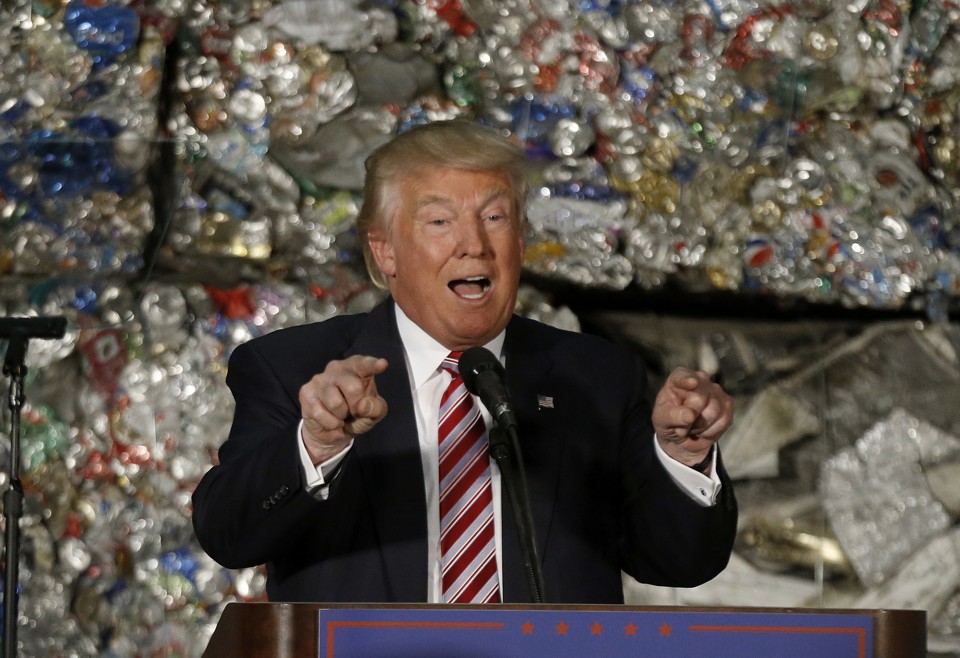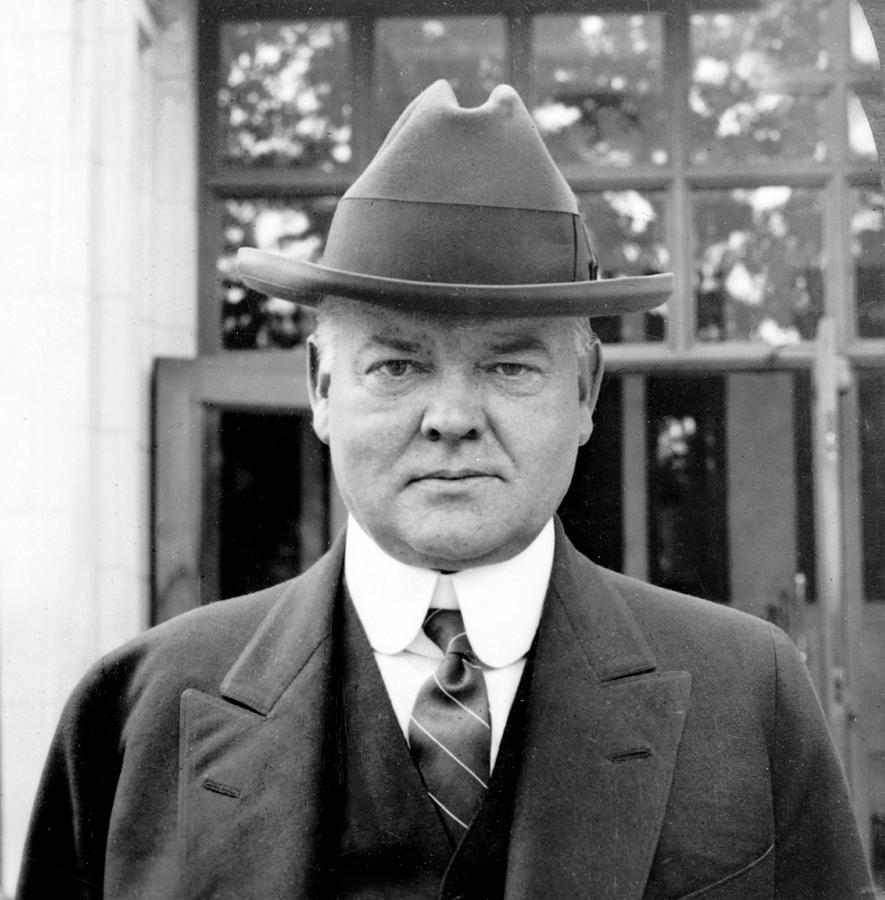The idiocy of his anti-free market proposals should horrify the conservatives.
What’s more, economists who study trade agree that if the U.S. raised tariffs on goods from other countries, those countries would retaliate by raising tariffs on U.S. goods. That could jeopardize the $1.3 trillion worth of goods the U.S. exports every year. “The system was designed and set up so that it would prevent these things from happening, to make policy makers and politicians in particular realize that there is no free lunch here,” Bown told me. “If you want to raise your tariffs, you can do so, but there is a cost to you doing so, that cost explicitly is my ability to do the exact same thing back to you.”
Could the U.S. Really Gut Its Trade Deals?

Trump and others vow to pull out of the TPP and beef up tariffs, but that wouldn’t stop companies from continuing to move jobs to where labor is cheapest.
Donald Trump on Tuesday vowed to pull back on trade agreements.
Keith Srakocic /
Free trade is largely to blame for the decline of America’s middle class. That’s the increasingly popular sentiment embraced by politicians like Donald Trump, Bernie Sanders, and even, to some degree, Hillary Clinton, in the run-up to the 2016 presidential election. In a speech Tuesday, Trump went the furthest yet, vowing to rip up past trade deals and renegotiate other trade agreements “to get a better deal for our workers.”
But is it really trade deals like the North American Free Trade Agreement (NAFTA) that have caused manufacturing jobs to disappear? Or is it just the predilection of companies to go where labor is the cheapest, whether or not there are trade deals? To be sure, some trade deals might have incentivized companies who were on the fence to go overseas. And the U.S. could have handled those departures better, focusing more on retraining the workers who lost their jobs. But at the end of the day, reversing trade policy won’t bring jobs to America if there are other places in the world where goods can be made with cheaper labor. And unless politicians want to ask Americans to work for a few dollars a day, which is the going rate in many developing countries, those aren’t jobs that would create middle-class wages anyway.
Just look at the textile industry, which thrived in America until it went overseas, decimating towns across the South that, as I’ve written before, have yet to recover. In the early days of America, textiles were produced in the Northeast, in towns like Lowell, Massachusetts. But when those workers unionized and demanded higher wages and better working conditions, textile factories moved to the South, where employers could pay people less. When labor became more expensive in the U.S., companies moved work to Mexico, then to Korea, then to China, then to Vietnam. This has little to do with tariffs or with NAFTA—the U.S. doesn’t have a bilateral trade agreement with Vietnam, but companies still make things there and sell them here. They do that because the standard-of-living is lower in developing countries, and workers are willing to work for lower wages.
The tariffs on textiles are actually among the highest that still exist, Chad P. Bown, a senior fellow at the Peterson Institute of International Economics, told me. But companies still make clothing and shoes overseas because it requires a lot of labor to do so, and labor is much cheaper outside the United States.
Putting a 45-percent tariff on goods from China, or a 35-percent tariff on goods from Mexico, as Trump has proposed, wouldn’t stop companies from moving production somewhere cheaper, Bown said. Even with those tariffs, “the production wouldn’t move back to the U.S. It would move to the next least costly country—Indonesia, Vietnam, wherever,” he said.
It would be nearly impossible to put large tariffs on imported goods from every country that Americans buy things from. For starters, changing tariffs requires an act of Congress. And doing so would mean disrupting the agreements the U.S. has with 160 other trading partners that are part of the World Trade Organization.
Those agreements are far from simple: The U.S. has been a part of global trade agreements for 75 years. In the aftermath of World War II, the U.S. entered into the General Agreement on Tariff and Trade (GATT) in 1947 with 23 other developed countries. Each round of GATT negotiations led to lower tariffs, including when the organization became the World Trade Organization (WTO) in 1995. The average tariff rates in the United States have declined from 18.4 percent in 1934 to 1.3 percent in 2007, according to the United States International Trade Commission. This web of agreements has paid off: Economists have calculated that trade-policy liberalization since World War II has increased the U.S. gross domestic product by somewhere between 7 to 13 percent.
More herehttp://www.theatlantic.com/business/archive/2016/06/could-the-us-really-gut-its-trade-deals/489476/”>More here.

